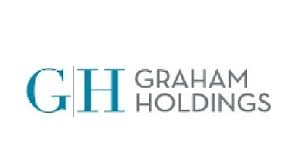It was only two months ago that I last wrote about Graham Holdings Company (NYSE:GHC), but it feels like it may have been two years ago. On March 9th I modeled the company's worth at ~$680 per share using what I felt were conservative assumptions.
While the number of confirmed COVID-19 cases at the time was still low, the risk of large scale disruption was there and clearly not enough effort was made to analyze this risk and incorporate it into the modeled valuation.
 Company logo. Source: Company.
Company logo. Source: Company.
First quarter earnings have also been released since I last wrote and the company also held its annual meeting on May 7th. Both provide important insight into specific COVID-19 impacts to the company's operating businesses and how the company's capital structure is being managed in response. I also posed three questions to CEO Tim O'Shaughnessy during the company's annual meeting. His answers were thoughtful and shed some light on how to think about the valuation of the company.
If forced to place a specific value on shares today it would be roughly $520 per share, a decline in intrinsic value from two months ago that is close to proportional to the share price decline. But, all of the company's businesses have been and continue to be impacted by COVID-19, and investors should consider that the range of possible outcomes for Graham Holdings and the economy continues to be wider than normal. As such, a larger than normal margin of safety may be demanded for the stock by many investors.
First Quarter Earnings and Initial COVID-19 Impacts
First quarter earnings were affected by the COVID-19 pandemic, but obviously not nearly to the extent that Q2 and Q3 earnings will be. It appears that prior to the disruption many subsidiaries were on a path towards a